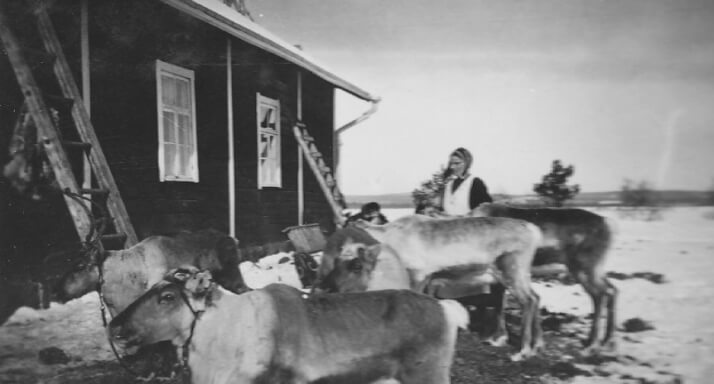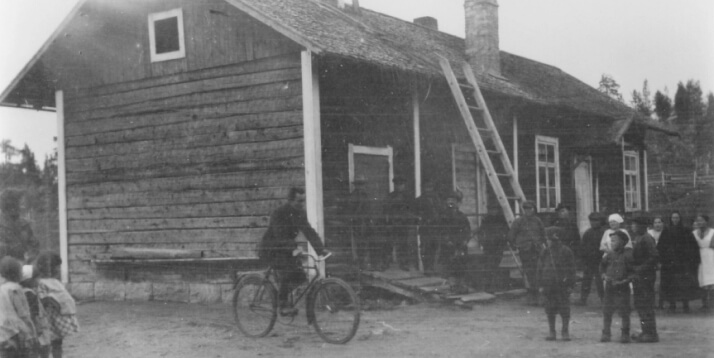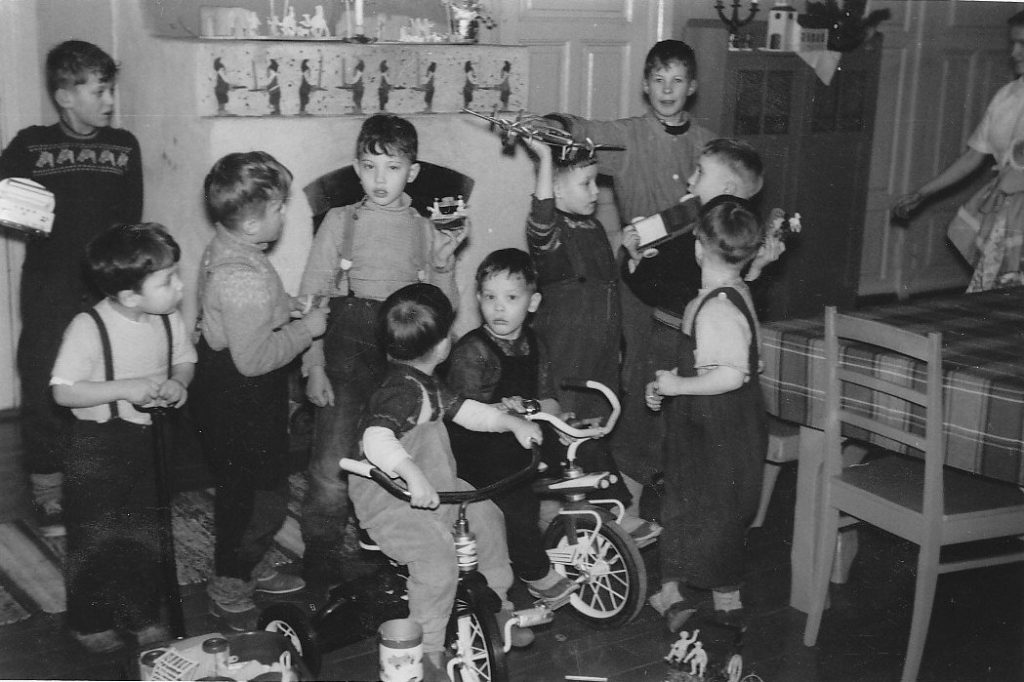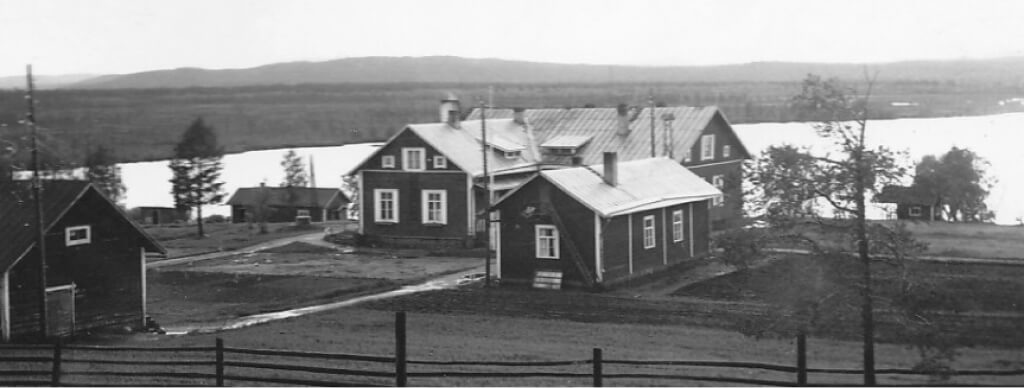How all started in year 1851
In 1851, an Inari Sámi man, Abraham Johanneksenpoika Aikio, planned to build his home on the shores of Leutolahti, at the southern end of the vast Muddusjärvi Lake. The peaceful location, fish-rich waters, good waterways, and perhaps even the majestic landscapes supported his decision. The estate was registered as part of the Paadari village and named Riuttula.
However, only five years later, a settler named Henrik Samuelinpoika Mattus took residence on the estate. Near the present-day boat harbor, at the upper reaches of the “Kettujoki”-river, stood a modest cabin built of unpeeled pine logs, along with a sauna and a traditional Sámi storage hut (niliaitta).

From the World’s Northernmost Orphanage to a Modern Youth Center.
The YWCA Era
Naemi von Bonsdorff, a nurse who had moved to Inari from the south, purchased the Riutula estate from the Mattus family in 1903 and donated it to the YWCA (Young Women’s Christian Association). A passionate visionary, Naemi specified in the deed of donation that the estate was to serve as a missionary station for Lapland as well as a shelter for the elderly and children.
As a result of a nationwide fundraising campaign, the YWCA’s home for the elderly and children was inaugurated on Epiphany in 1907 on the shores of Lake Muddusjärvi. Naemi von Bonsdorff herself became the institution’s first director. Over the course of its history, the orphanage had a total of eighteen directors—a high turnover rate, reflecting the demanding nature of the work, the isolation of the location, and the challenging journey to the site, which was far from any roads.
Architect Wrede designed the building’s blueprints free of charge. In addition to the beautiful and spacious main building, Riutula included a barn, several utility buildings, as well as fields, meadows, and forests covering an area of 750 hectares. The institution was nearly self-sufficient until 1966.

Operation Kulkuset
Operation “Kulkuset” (Jingle Bells) which brought attention to Lapland’s orphaned children, began in 1956. Soldiers from the U.S. Air Force’s communications squadron delivered Christmas gifts from their base in Germany to Riutula, the world’s northernmost orphanage. Help also came from within Finland, where numerous YWCA-organized Riutula clubs across the country supported the orphanage through handicraft sales, fundraising, and sponsorship programs.
A road to Riutula was only completed in 1963. Before that, people traveled via boardwalk paths, waterways, or in winter, by reindeer sled. After World War II, the gold rush in Lemmenjoki increased boat traffic past Riutula. The children often watched as fortune seekers paddled from Muddusjärvi along the Kettu River, chasing their dreams of striking gold.

A New Era in Riutula
A new chapter began for Riutula in 1966 with the inauguration of newly built, modern facilities that met contemporary standards. The National Board of Social Welfare had repeatedly urged the YWCA to construct a new, fire-safe and up-to-date orphanage. The old buildings were demolished, and the children moved into new, apartment-style housing with their caretakers. Like its predecessor, the new facility had a capacity of 24 residents.
As social security and living standards improved across Finland, the need for orphanages declined nationwide. As a result, Riutula’s orphanage was closed in 1978, and the remaining ten children and young people were placed with foster families. The YWCA then rented the buildings to the Sámi Education Institute for use as student housing, while some spaces were leased to local residents.
In 1988, the YWCA donated the buildings to the municipality of Inari. The municipality, in collaboration with the Ministry of Education, later renovated the facilities and leased them to Metsähallitus, which established Eräkeskus Inari, a wilderness and youth center within Finland’s national network of youth centers, in the spring of 1994. Until the end of 2003, the center was managed by Villi Pohjola. Since January 1, 2004, its operations have been overseen by Nuoriso- ja luontomatkailukeskus Inari Oy, a company owned by the municipality of Inari.
The center continues to serve a wide range of visitors, though children and young people remain a significant part of its community.
